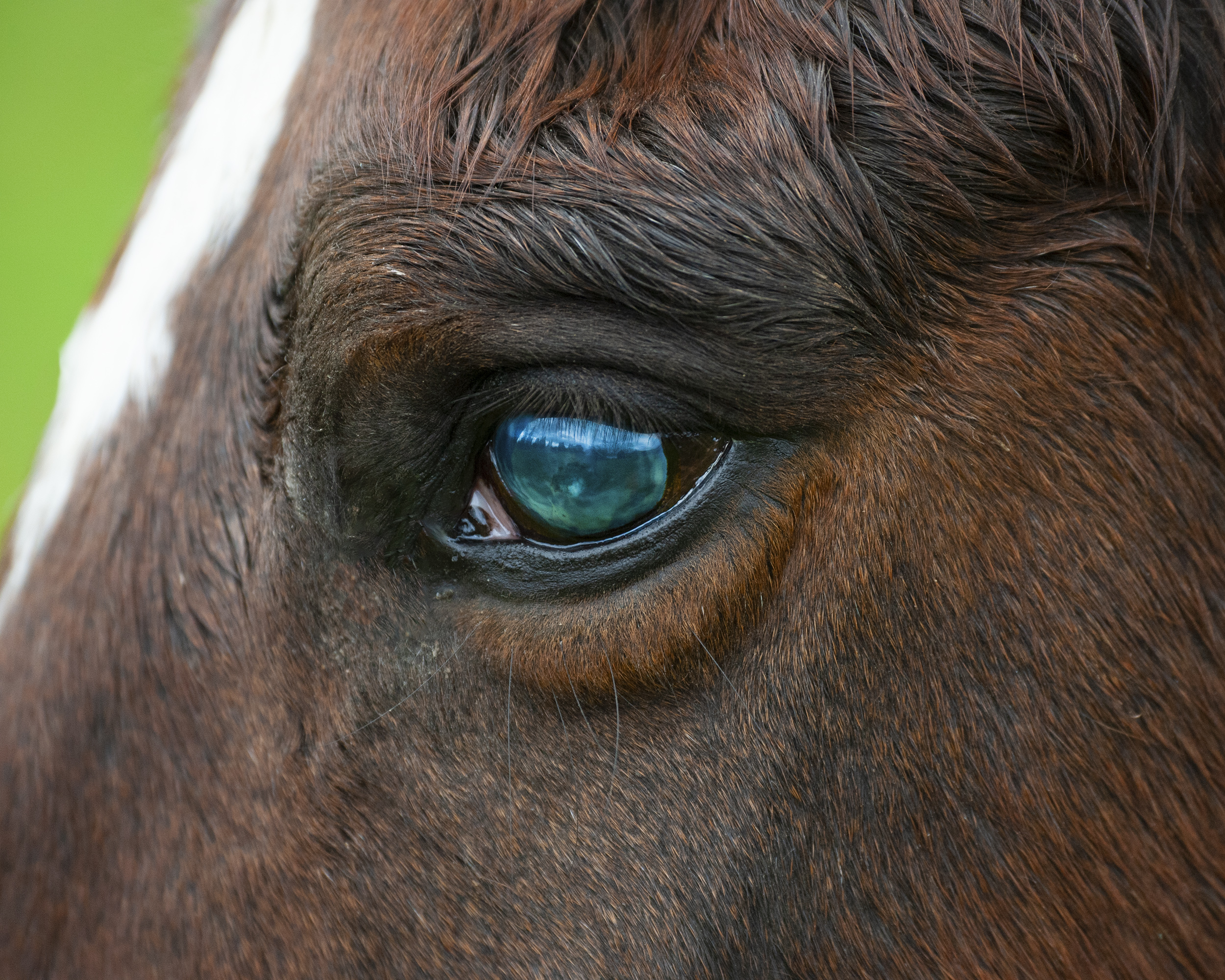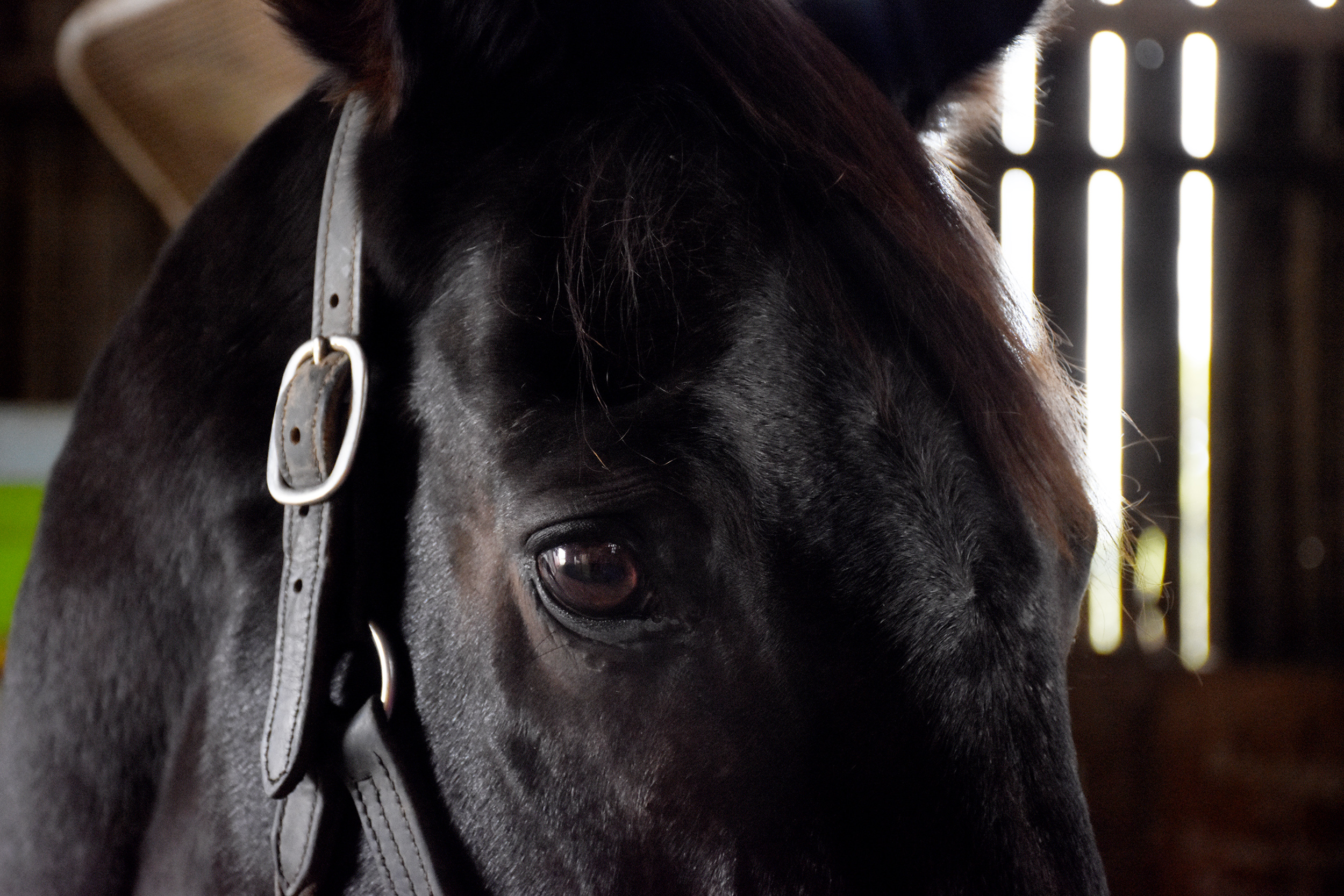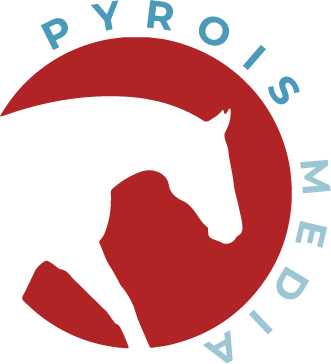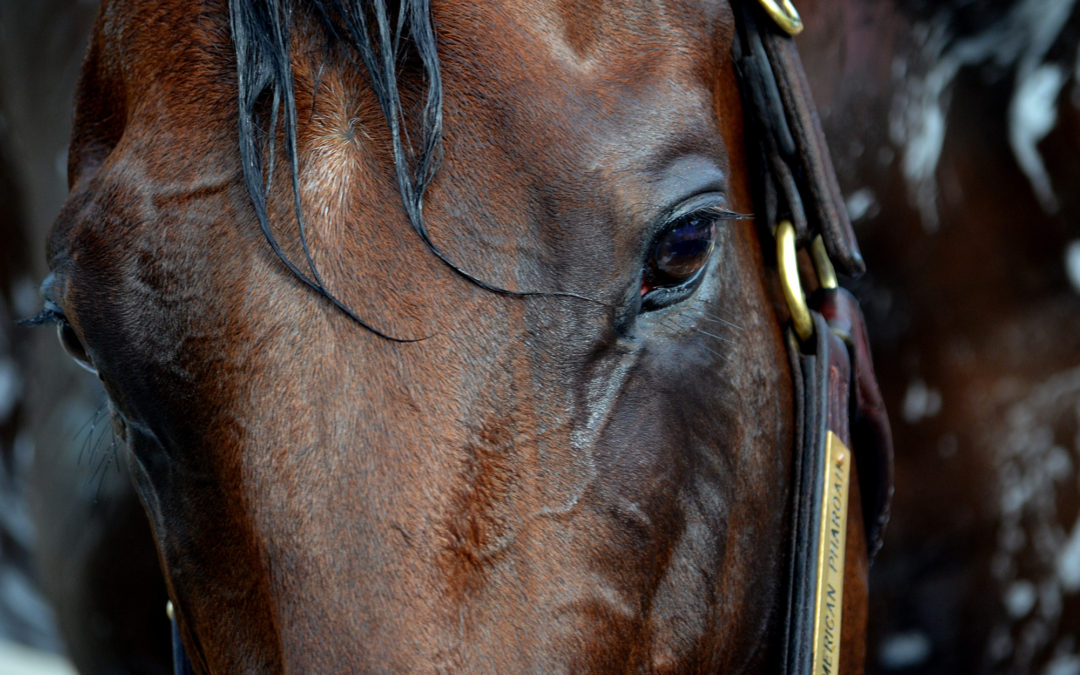This month’s Beyond The Lens is a bit different than looking at just one picture. Today I’m looking at what has turned into one of my favorite photos to take – equine eye photos.
My love of this photography developed over time and wasn’t a photo I realized I took so often until people often started referring to them when discussing my photography. I feel like eyes can tell you a lot about anyone – be it horse or human – so trying to capture the expression in horses’ eyes and get the photos I have in mind for every horse has become a welcome challenge for me.
A horse’s eyes and ears tell you a lot about their mood at that moment and give you a lot of information about their personality. A horse about to turn into a kite may widen their eyes for an instant before letting loose or a horse who is happy around humans may have what is referred to as a “soft” or “kind” eye. Equine body language is fascinating to me so being able to study something so important to indicating their behavior has been a fun photography project.
Unfortunately, taking eye photos aren’t as easy as just zooming and snapping.

Crystal’s left eye blindness has led to some dramatic photos over the years.
I’ve taken many eye photos from different angles and, perhaps it is my pickiness, but many times I feel like it’s just not “right.” Sometimes it can be a case of a horse moving at just the wrong time or changing their expression right as I hit my shutter button. Or it could just be that a horse’s expression in front of me doesn’t translate well to a photograph.
Just like humans, some horses aren’t photogenic and no matter what their expression looks like live, it isn’t captured properly by the camera. This is an issue with all body parts so it’s definitely not eye exclusive.
One question I get asked a lot is if I take a photo of a bigger area than zoom in in post-production or if I zoom in while taking the photo.
If at all possible when taking an eye (or any other close-up photo) shot, I zoom into right there in camera. About 98 percent of the time I have a lens that allows me to zoom in to the depth I want and other than possibly a tiny bit of cropping in post-production the photo is straight from the camera. The other two percent of the time, I had a shorter lens on because I wasn’t planning on taking anything but a full on head or body shot and when I see it on my computer decide that an eye crop might look cool.
While the post-production zooming method sometimes works well I’ve found that unless I was already close up on a horse’s head, it’s not going to look good. This isn’t as much a camera quality issue as a close crop shrinking the photo size issue and often the photo is useless for much more than playing around on social media.
In my mind, eye shots are some of the most challenging shots to take while being one of the most important when capturing a horse’s personality. That’s why I continue to take them shoot after shoot.
Beyond The Lens is a monthly blog looking at some of Melissa’s favorite photos. Interested in scheduling a photoshoot with Pyrois Media or just want some photography advice? Contact us for more information.

1997 Breeders’ Cup Sprint winner Elmhurst at Our Mims Retirement Haven

